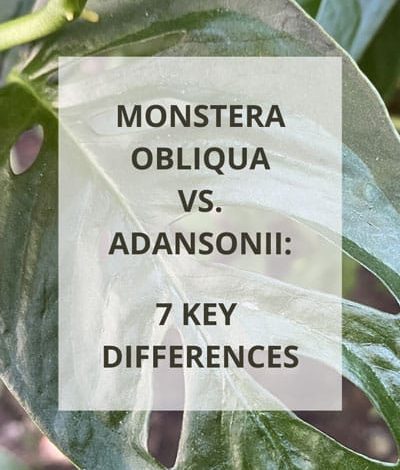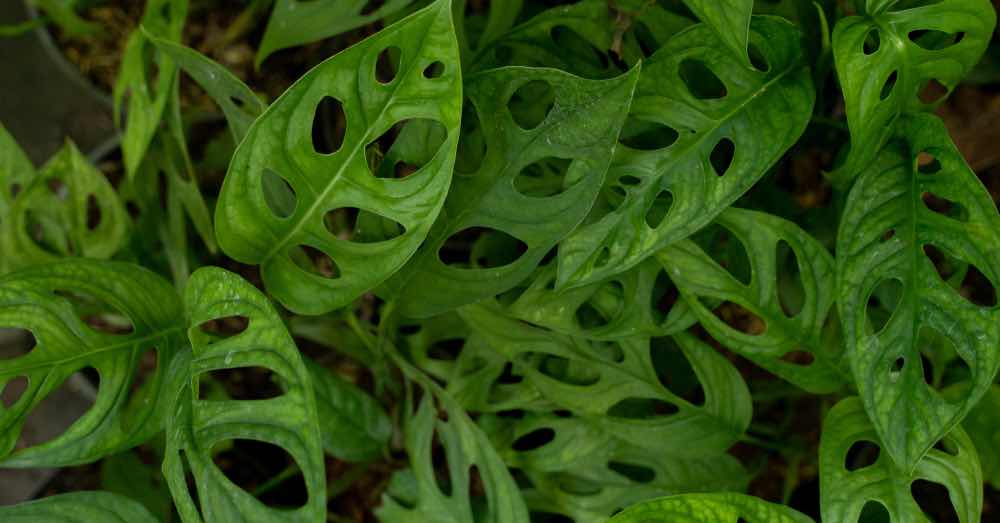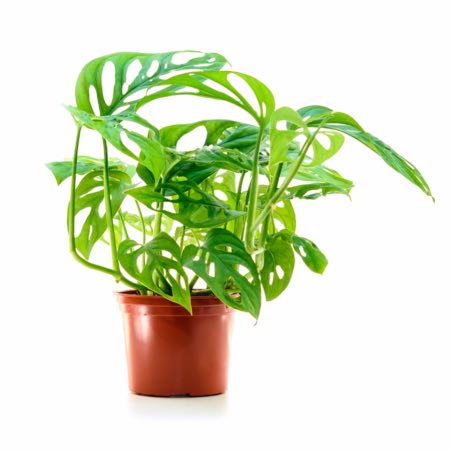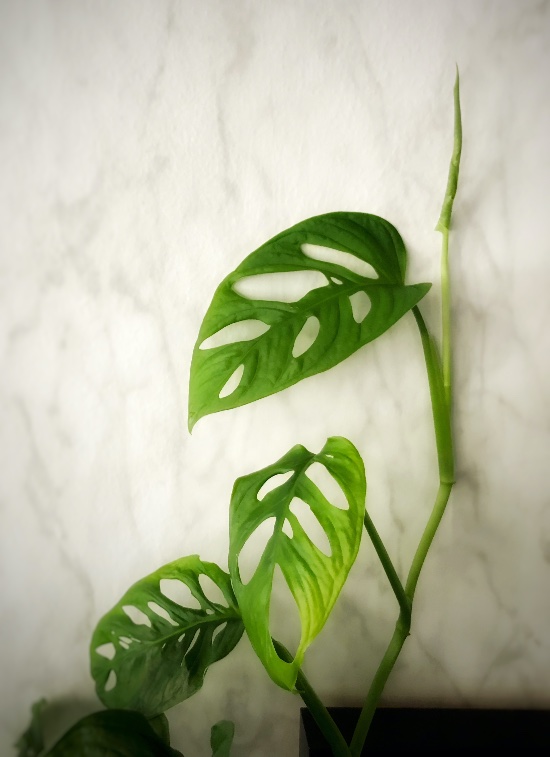Differences between monstera obliqua and adansonii


It is curious to see how, in just a few years, we have begun to discover one of the most unique botanical families. And it is that, beyond the so-called Adam’s Rib so common in interiors, the Monstera genus is a real box of surprises. Not only does it have about 60 well-differentiated species. In addition, some of them make it difficult to identify them as part of this family if you do not know them. And perhaps, among those plants that play absentmindedness, the most striking is the monstera obliqua. A true rarity that deserves to be known a little more.
Delving into the characteristics of the monstera obliqua is almost mandatory for a plant lover. And not just because we have monstera deliciosa as one of our go-to plants. Also because this unique monstera is often confused with another of the plants that are imposed as a trend: the monstera Adansonii. A plant cousin with which, although it bears certain similarities, its differences are even more palpable.
Therefore, if the extraordinary catches your attention or if the original arouses your curiosity, let’s see what makes the monstera obliqua different from the monstera adansonii. The best way to know exactly what plant we have at home. And, also, to value its uniqueness as it deserves.
HOW MONSTERA OBLIQUA AND ADANSONII ARE DIFFERENT
Let’s start with the similarities because, beyond labels, they directly concern their cultivation. The care of the delicious monstera, the greatest exponent of this plant genus, can be extrapolated to both the monstera obliqua and the Adansonii. All of them share needs for light, substrate, temperature and even irrigation.
But let’s make a point. When we saw everything you need to know about the Monstera Adansonii, we commented that its watering needs are greater than in the case of the deliciosa. A requirement that is also shared by the monstera obliqua. The reason is simple to understand. The hydration of a plant lies, to a large extent, on the surface of its leaves. Since both the monstera obliqua and the Adansonii have their characteristic holes, they have a greater need for humidity.

Other than this, both Monstera obliqua and Adansonii are hardy, easy-care plants. Undemanding, climbing character and extremely beautiful. It is true that they have a smaller size than the delicious monstera. But their attractiveness is such that, even so, they are irresistible plants. And, curiously, very prone to being confused by their apparent similarities.
That said, let’s see what are the differences between monstera obliqua and monstera adansonii. The best way to be able to distinguish two authentic whims of nature.
1. The thickness of its sheets
Something appreciable with a simple glance, but much more if we touch its leaves. Monstera obliqua has leaves that are as thick as paper. Monstera Adansonii, on the other hand, has a somewhat coarser and rougher texture. Nothing like touching one and another to realize this aspect.
2. The holes in its leaves, the main difference between monstera obliqua and Adansonii
It is, without a doubt, what most attracts the attention of both plants. And, also, what is usually called an error. The great originality of both monsteras is that they have leaves with a pattern that is certainly different from the popular monstera deliciosa. Their main attraction is that they are naturally perforated.

However, this is the main difference between Monstera obliqua and Monstera Adansonii: the number of holes and the size of the holes. The monstera obliqua presents almost all of its leaves with holes. A natural drawing that sometimes makes the leaf consist of tiny green threads and even break the edge of it. In the case of the monstera Adansonii, the drawing is different. It does have holes, but these are integrated into the blade.
Taking it to flatter ground: Monstera obliqua looks like it’s been attacked by an army of snails, while Adansonii is just a clueless slug.
3. The length and shape of its leaves
Monstera obliqua leaves are lanceolate. Or, put another way, spear-shaped. Also, they resemble the monstera deliciosa in that they are of good size.
However, the monstera Adansonii has smaller, rounder leaves on its sides.
4. The presence of one and the other in nature
And we arrive at a difference that, although it is not palpable, it is interesting to know. The monstera genus is native to Mexico and the tropical zone of the American continent. And, curiously, it is easier to find the monstera Adansonii naturally than the pure monstera obliqua.
Taking these aspects into account, now you will be able to differentiate them. The best way not to get monstera obliqua for Adansonii.
About the author
 > Written by: Rubén Martínez Alcocer Store: Verdecora Aravaca For two and a half years, I have been part of the Verdecora team. First in our center in Arroyo M50 and, since its opening, in Verdecora Aravaca. My passion for nature comes from behind: I have not only trained in gardening and forestry. Also today is my profession in the Decojardín section. As a nature lover, I enjoy going out to the countryside always accompanied by my plant guide and the bird guide, my other great passion. I don’t understand life without sports, I love bike routes; nor without the cinema. In addition, I love bringing people closer to the exciting world of plants and their curiosities; and I try to infect them with my enthusiasm and dedication. The world without green would be very black! I wait for you in Verdecora Aravaca
> Written by: Rubén Martínez Alcocer Store: Verdecora Aravaca For two and a half years, I have been part of the Verdecora team. First in our center in Arroyo M50 and, since its opening, in Verdecora Aravaca. My passion for nature comes from behind: I have not only trained in gardening and forestry. Also today is my profession in the Decojardín section. As a nature lover, I enjoy going out to the countryside always accompanied by my plant guide and the bird guide, my other great passion. I don’t understand life without sports, I love bike routes; nor without the cinema. In addition, I love bringing people closer to the exciting world of plants and their curiosities; and I try to infect them with my enthusiasm and dedication. The world without green would be very black! I wait for you in Verdecora Aravaca

![Photo of The [12 Steps] You Must Follow to Grow Watermelons Successfully](https://www.complete-gardening.com/wp-content/uploads/2022/08/the-12-steps-you-must-follow-to-grow-watermelons-successfully-390x220.jpg)

![Photo of Aloe Vera: [Planting, Care, Irrigation, Substrate and Pests]](https://www.complete-gardening.com/wp-content/uploads/2022/08/aloe-vera-planting-care-irrigation-substrate-and-pests-390x220.jpg)
![Photo of Domestic Nandina: [Cultivation, Care, Pests and Diseases]](https://www.complete-gardening.com/wp-content/uploads/2022/08/domestic-nandina-cultivation-care-pests-and-diseases-390x220.jpg)